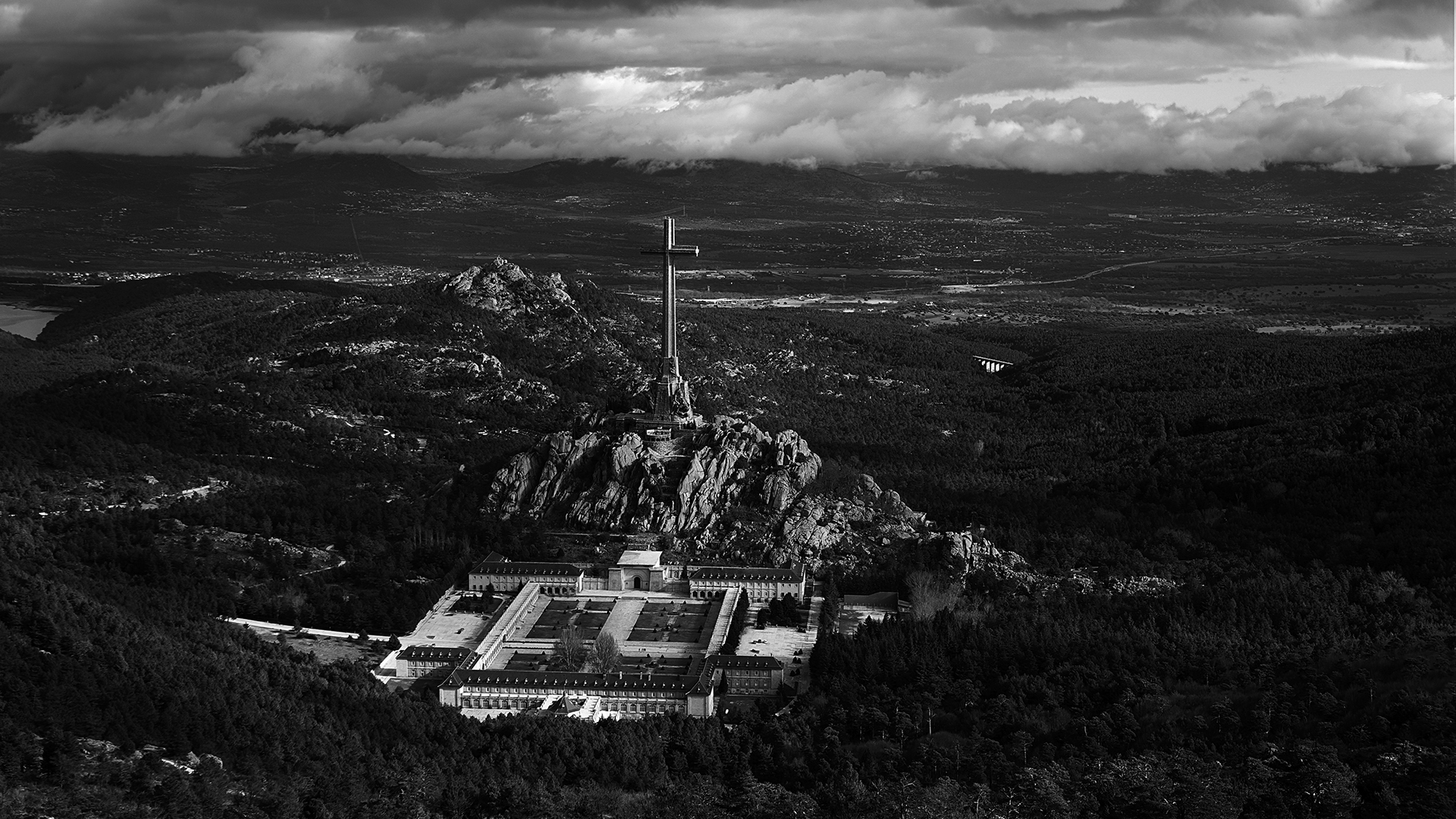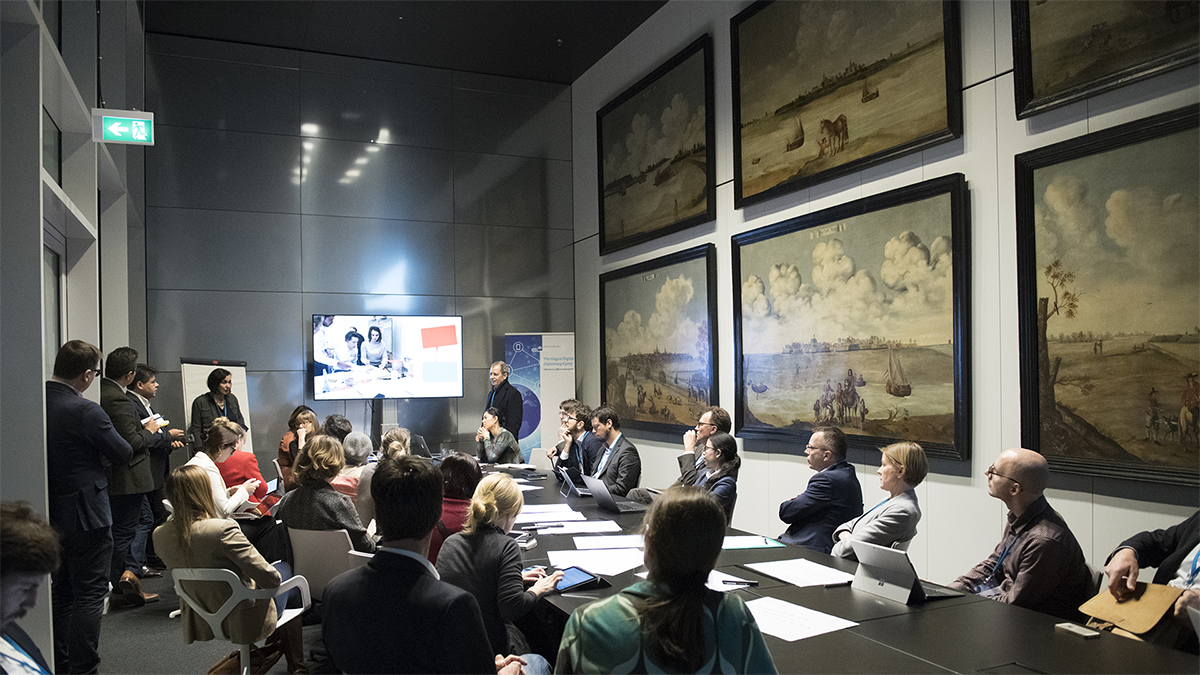Monuments stand as a tangible testimony to what is untouchable: memory and history in their collective dimension.
As vehicles of meaning, monuments are ambassadors affecting the public negotiation of narratives.
Article Creative Crossovers @ Public Diplomacy Magazine, University of Southern California, USC Annenberg, USC Centre on Public Diplomacy, USC Masters of Public Diplomacy Program, USA, 7 June 2019
Monuments stand as a tangible testimony to what is untouchable: memory and history in their collective dimension. As vehicles of meaning, monuments are ambassadors affecting the public negotiation of narratives.
Several monuments present opportunities to engage the process of negotiation of a collective, public narrative in response to the controversy and discourse facilitated by the monuments. To creatively address these narrative-building processes, Hybrid Space Lab launched the long-term, international “Deep Space” exploration, and intervention program. This program first focused on memory politics and the re-signification of controversial monuments and heritage through a case study of the Francoist monument of Valle de los Caídos (“Valley of the Fallen”).
Built between 1940 and 1959, Valle de los Caídos is a large-scale memorial monument in the Sierra de Guadarrama mountain range close to Madrid, dedicated to the “fallen” of the Spanish Civil War. Conceived by the Spanish dictator, Francisco Franco, and partly built by Republican prisoners of war, it has stirred heated public debate, mainly on its future and on the appropriate location for Franco’s remains. It stands as one of the world’s most divisive, active monuments.
The workshop “Deep Space: Re-signifying Valle de los Caídos” that took place in October 2018 in Madrid focused on creative processes, digital tools, and strategies to expand the monument’s representation and narrative. The workshop developed ideas for transforming the site by means of networked digital tools without physically touching the monument. These tools enable the integration of sidelined voices within a polyphonic monument, counterbalancing the site’s totalitarian narrative.
On a broader scale, such an archive underpins the current digital turn in memory-making, transforming the monument’s tangible sphere and the negotiation of collective narratives. These tools favor redefinition processes that engage multiple actors, rendering monuments and memory-making more democratic.
Hybrid Space Lab’s transdisciplinary workshop brought together practitioners from a variety of fields, including artists, architects, landscape architects, art curators, media designers, performers, sound artists, theatre-makers, and technology experts. The workshop also engaged experts in psychology, psychiatry, anthropology, forensic archeology, history, and political science. Integrating and combining tools and concepts from a variety of backgrounds, the workshop used creative crossover methods to crack open future visions for the monument.
To resignify controversial memory landscapes, the workshop participants proposed new meanings and envisioned creative processes with the potential to alleviate the controversy. The workshop relied on artistic practices and applied disciplines across the art field to approach the monument’s controversial heritage. The interaction amongst disciplines shed light on how diverse methods may favorably overcome historical wounds and controversies.
By means of creativity, Hybrid Space Lab’s approach paves the way towards more integrated, collective processes of memory- and meaning-making. Bringing creativity into controversial situations informs engagement with contentious landscapes, negotiation stasis, and political reticence. As such, “Deep Space” is indicative of an interdisciplinary approach, whose potential has implications reaching further than resignification of heritage, influencing other controveersial contexts.
Coupling free-floating creativity and tradition is relevant for other institutions as well. This kind of future-oriented creativity bridges the gap between creative processes and static institutions and debates. For instance, it echoes the aim for innovative negotiation and diplomatic processes. A creative approach to diplomacy can unlock new ways of thinking and problem-solving beyond the ordinary diplomatic tools.
In the context of Hybrid Space Lab’s work, “crossover” is both a method and a strategy, drawing on the recognition that transferring ideas from one field to another is a recipe for cultural innovation. Working within a crossover framework entails daring to combine unexpected elements, coordinating concepts that may not traditionally fit together. Uprooting concepts and tools from their original context and applying them elsewhere favors adaptive thinking and unprecedented, hybrid solutions. Crossover promotes the development of new synapses. Thanks to its versatility, the crossover method is relevant in several controversial landscapes, promoting exchange, mutual learning, and openness.
Applying creative thinking to conventionally less creative fields can liven up inert diplomatic institutions and processes, supporting adaptive solutions in a fast-evolving political landscape. To address the need for innovative and This program creates inspirational spaces to speculate on possible diplomacy applications by transferring innovative solutions from numerous fields. For instance, a “Hybrid Diplomacy Lab” co-organized with the Dutch Foreign Ministry’s Director General for Europe, the innovation team of the Ministry (DARE), and Hybrid Space Lab in January 2018 aimed at “strengthening creativity,” focusing on the issue of migration. Entitled “A Reset Button for the Debate on Migration,” this lab facilitated a fresh start for a more nuanced discussion about this urgent matter.
“Hybrid Diplomacy Lab” engages design thinking and research methods and tools. Creativity and solution-oriented design research investigate freely on what things can be, rather than attempting hyper-specialized, scientifically complex answers on what things are. The crossover innovation method applied at the January 2018 workshop focused on the development of a ‘Hybrid Migration’ platform, inspired by the transfer of concepts from existing digital platforms such as Helpling (a London-based online platform for booking cleaning services), Uber, Airbnb, and SnappCar (a European car-sharing platform). Today, as digitalization is the common denominator that brings about major change in virtually every field, the transfer of digital innovation concepts can optimally promote innovative creative thinking.
Because of the importance of experiencing creativity as a process rather than as the product of the individual genius, “Hybrid Diplomacy Lab” utilized a variety of participatory methods in its group activities. For instance, the Lab relied on visual notations (consisting of drawings and words) to stimulate the participants’ most intuitive thought processes and to spark engagement. The simultaneous observation of drawings—as opposed to reading words in a sequence—helps develop unexpected connections and synapses and, thus, ideas.
The conceptual output of “Hybrid Diplomacy Lab” was “Hybrid Migration,” standing for digitally managed migration and outlining a yet unoccupied “third field” open for innovative ideas. This kind of free speculative thinking meets the need for genuine out-of-the-box ideas to unlock the standstill debate on migration.
As an interdisciplinary crossover initiative aimed at bringing innovation into embassies, the “Embassy Lab” program at the Royal Netherlands Embassy in Berlin was initiated in 2015 and has since then been curated by Hybrid Space Lab. As a crossover, “Embassy Lab” brings together the traditional institution of the Embassy with the innovative potential of a creative Lab, producing “creative diplomacy.”
The “Embassy Lab” format draws on design thinking and creative speculative research methods. As such, the program addresses urgent need for creativity in governance at a time where acceleration and complexity, and thus unpredictability, are increasingly prominent features of society. Faced with unpredictable developments, creativity and ingenuity are needed in order to craft new contexts, to frame issues anew, and to provide new solutions.
The “Embassy Lab” series featured a variety of programs, from “Crisis Design,” “Smart City Governance,” and “Sharing Economy” to “Co-Curating the City” and “Future Diplomacy.” This lab establishes new models for interactions by opening up embassies to many innovative actors and offering an interdisciplinary, co-creative space in and with the Embassy.
In the current age of globalization and digitalization, there is the need (and opportunity) for embassies to reimagine their role and reframe their historical function. The “Embassy Lab” at the Dutch Embassy in Berlin provides such a model and prototype for experimenting with future function and scope of an embassy’s work.
In the current age of globalization and digitalization, there is the need (and opportunity) for embassies to reimagine their role and reframe their historical function. The “Embassy Lab” at the Dutch Embassy in Berlin provides such a model and prototype for experimenting with future function and scope of an embassy’s work.
The crossover method not only enables large, well-established institutions to reinvent their methods and approaches, but also allows new, creative formats to unfold in unexpected places. Crossover generates new thinking about long untouched debates and landscapes. Testing the crossover method’s
Workshop “Embassy Lab” at the Dutch Ministry of Foreign Affairs, The Hague, 02-02-2018, © Hybrid Space Lab
adaptability, Hybrid Space Lab is working on a project in the Demilitarized Zone (DMZ) between the Democratic People’s Republic of Korea (DPRK) in the North and the Republic of Korea (ROK) in the South.
Established at the end of the Korean War in 1953, the DMZ is a 250 kilometer-long, four kilometer-wide military demarcation stretching from the Sea of Japan to the Yellow Sea. Since 1953, the DMZ has become a negative space, a negation of habitation as well as war violence, letting the void replace conflict. The DMZ embodies politics as distance, as the latter is materialized in the no-go land strip.
As a consequence of the absence of human activity for more than 65 years, the land strip has become a verdant 984-square-kilometer nature reserve where endangered flora and fauna species have had the chance to regain space. Considering the evolution and establishment of the DMZ, Hybrid Space Lab’s project “DMZpace” draws on the tension between nature’s generous patience and the nervous, un-reconciled historical wounds.
This approach promotes the development of a creative outlook in favor of collaborative visions for the future of the DMZ. By opening up the significance and multi-layered meaning of the demilitarized buffer zone, the project “DMZpace” aims to facilitate co-creative engagement with the future of contentious physical place as well as its possible digitally supported features.
The outcomes of creativity and innovation are often limited by various political developments. Yet creative crossover supports collective memory-processing before the window of opportunity is lost to fast-unfolding international relations. As the crossover method utilizes diverse processes, engagement with power relations and agents at work in the DMZ is necessary for creative approaches to negotiations. Indeed, any intervention in the local context must be conceived as shaping public diplomacy, a creative act capable of transforming the current narrative and stimulating negotiation efforts.
At the DMZ, meanings of border, memory, and monument merge and interact. At the same time, monuments and public diplomacy mirror each other as they both convey complex, layered histories and power relations. The “DMZpace” project is a further opportunity and testing ground to validate the crossover method’s ability to transform narratives and break through prejudices in order to negotiate the past and open up the future.
related PROJECTS
related PRESS

